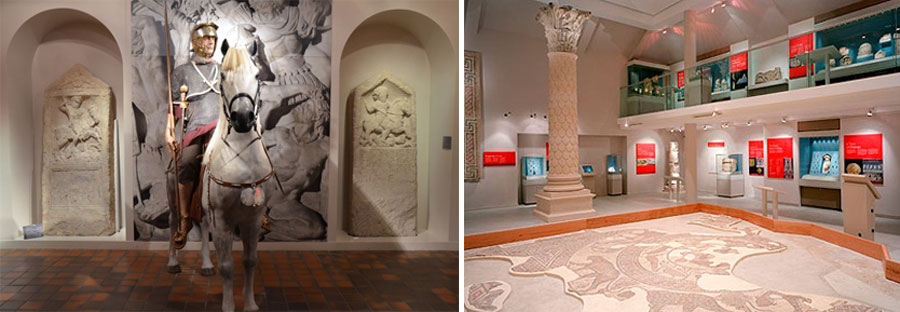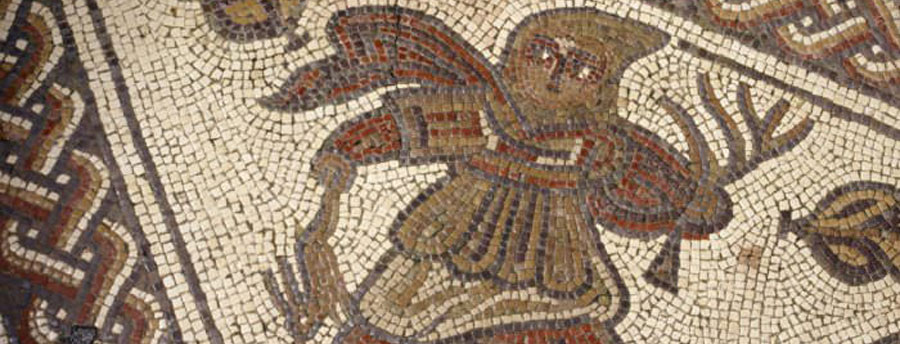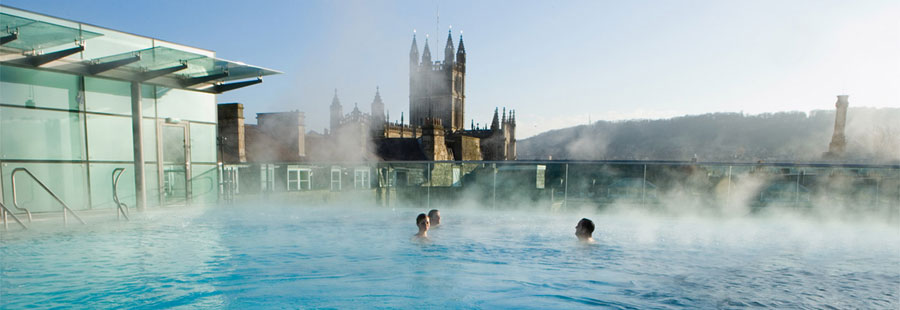The Roman legions arrived in England in 43AD and stayed for the next 350 years - unsurprisingly many traces remain, some definitely more immediately obvious than others.
GK Chesterton wrote that “the rolling English drunkard made the rolling English road – a reeling road, a rolling road, that rambles round the shire” and so familiar are those twists and turns that us English tend to assume any straight bit of road must be Roman.
In the Cotswolds you may well be right! Cirencester, Roman Corinium, was the second largest city in Roman Britain and as a consequence straight Roman roads criss-cross the area: the Fosse Way (A433, A429), Ermin Street (A417, A419) and Akeman Street (B4425) amongst others.
So where, other than some unusually straight roads, should we seek out evidence of our Latin lovers stay in the Cotswolds?
Cirencester (Corinium)

There is no better place to start than Cirencester right in the heart of the Cotswolds. The population of Roman Corinium was probably not dissimilar to that of modern Cirencester (c18,000) and while elsewhere in the town there are visible remains (a section of the town’s Roman wall in the Abbey Grounds and the earthworks of the large amphitheatre that held some 8,000 spectators off Cotswold Avenue) the best place to get a feel for Roman Britain is in the award winning Corinium Museum. As well as loads of Roman artefacts there are hands-on exhibits, a reconstructed mosaic floor and Roman town-house interior, they've even got a Romans app!
Villas, villas everywhere

Some 50 Roman villas have been identified in the Cotswolds – one of the highest concentrations in Roman Britain – but foremost amongst them is Chedworth Roman Villa: cradled in a beautiful Cotswold valley rest the remains of one of the grandest Roman villas in Britain complete with flushing toilets, under floor heating and mosaic floors – all the mod cons of the Roman period.
Less grand but also well worth a visit are Great Witcombe Roman Villa on the western edge of the Cotswolds and North Leigh Roman Villa at the eastern edge. Both are free to view and set in glorious rural valley settings.
Bath (Aqua Sulis)

Bath was the leisure capital of Roman Britain, and the Roman Baths are one of the finest historic sites you can visit: The Temple of Minerva, where you can cross a suspended walkway above the Temple courtyard, and explore the sacred area, where Roman worshippers gathered to pray, via digital reconstructions; and there’s the Great Bath, as well as the Roman changing rooms and sauna.

Finally - and to really feel like one of those latin lovers! - why not enjoy the hot spring water yourself at Thermae Bath Spa where by day and by night, you can relax in the indoor Minerva Bath and open-air rooftop pool with spectacular views over the city!
Related
Comments
Comments are disabled for this post.


 to add an item to your Itinerary basket.
to add an item to your Itinerary basket.









